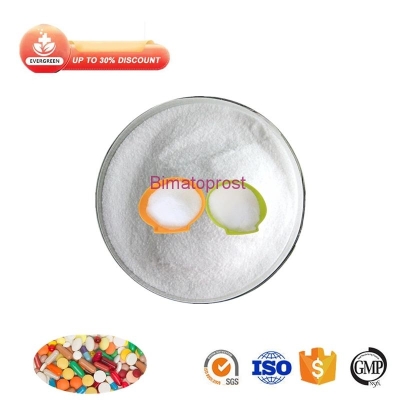-
Categories
-
Pharmaceutical Intermediates
-
Active Pharmaceutical Ingredients
-
Food Additives
- Industrial Coatings
- Agrochemicals
- Dyes and Pigments
- Surfactant
- Flavors and Fragrances
- Chemical Reagents
- Catalyst and Auxiliary
- Natural Products
- Inorganic Chemistry
-
Organic Chemistry
-
Biochemical Engineering
- Analytical Chemistry
- Cosmetic Ingredient
-
Pharmaceutical Intermediates
Promotion
ECHEMI Mall
Wholesale
Weekly Price
Exhibition
News
-
Trade Service
According to the theory, monomer insulin works faster than dipolymer and hexapolymer insulin because of its relatively simple molecular structureThe problem is that monomer insulin is too unstable to be used in practiceTherefore,in order to realize the potential of monomer insulin to act super fast, Stanford University researchers used "material science magic" to develop a new type of insulin preparation, the effectiveness rate is currently marketed four times faster-acting insulinthe study, led byEric, an assistant professor of materials science and engineering at Stanford University, and published July 1 in theScience Translational Medicine"Single-molecule insulin itself is very effective, but we want to develop a 'magic dust' to add to the bottle to solve its stability problems," said professor
Eric Appel,of theof "An ultrafast insulin development oedd by high-sghean etho-bod polymeric excipients." Research is usually focused on therapeutic agents in drug formulations, but we can make considerable progress in the overall efficacy of the drug as long as we focus on the development of performance additives (once known as 'inactive ingredients')"
professor Eric Appel
researchers, after screening and testing a large library of additive polymers, have discovered a compound that keeps monomer insulin stable for more than 24 hours under certain pressure conditions (In contrast, commercial quick-acting insulin can only remain stable for 6 to 10 hours under the same conditions.) The researchers then confirmed the efficacy of the drug in diabetes pigs In a retreat the current commercial insulin preparation consists of three forms of mixture: monomer, dimate and hexagon Scientists believe that monomers are the most easily used form by the human body, but in the medicine bottle, insulin molecules are attracted to the surface of the liquid, agglomeration and inactive (Hexahydrobenzene ether is more stable in vials, but because they must be broken down into monomers to be active, they work more slowly.) This is what it means to develop "Magic Fairy Dust", a polymer attracted to the gas-liquid critical plane "Our research focuses on polymers that prioritize entry into the gas-liquid critical plane and act as a barrier between insulin molecules that try to gather on the interface," said Joseph Mann, a graduate student at Appel Labs, one of the lead authors of the paper Most importantly, the polymer not only needs to do this, but also does not respond to the insulin molecule itself in order for the drug to function unhindered it was a long process to find the right polymer with the desired properties, and researchers spent three weeks in Australia, where they used a fast-moving robot to create about 1,500 candidate polymers Subsequently, at Stanford University, manual processing and testing were performed on a case-by-case basis to screen out the required polymers Through the continuous efforts of the researchers, the magic polymer was finally discovered a few weeks before they planned to experiment with diabetic pigs "It just felt like nothing had been going on, and then all of a sudden there was this surprise But there is a deadline of two months left So when we get encouraging findings, we have to move on right away , commercial insulin is generally stable for about 10 hours in accelerated aging tests, but the polymer greatly prolongs its stabilization period Monomer insulin accumulates on its own within 1-2 hours, the next step is to see how the polymer affects monomer insulin This is another welcome victory when the researchers confirmed that their formula can remain stable for more than 24 hours under a certain pressure Caitlin Maikawa, another graduate student at Appel Labs, who the paper and another graduate student at Appel Labs, said: "Although we use monomer insulin with poor stability, by adding polymers, we have more than doubled the stability of today's commercial standards then, researchers assessed the role of their new monomer insulin preparation in diabetic pigs, and now injected 90 percent of their peak activity within five minutes And commercially available quick-acting insulin only began to show significant activity after 10 minutes In addition, the activity of the new monomer insulin peaks in about 10 minutes, while the commercially available insulin takes 25 minutes in the human body, this difference may mean that the time it takes for insulin to reach peak activity is reduced by four times The over-absorption of insulin is based on simpler insulin monomer molecules and is absorbed much faster than the more complex dipolymers and hexapolymers used in commercially available quick-acting insulin analogies Photo Credit JL Mann et al., "Scientific Translational Medicine( 2020), Maikawa, said: "When I did blood tests and started counting, I could hardly believe that it looked so good "It's really unprecedented, " says Professor Appel, This has been a major target for many big pharmaceutical companies for decades "
many successful researchers plan to apply to the Food and Drug Administration For approval to be able to conduct clinical trials in humans to test its new insulin formulations Given that the polymer has achieved a significant increase in commercial insulin stability, they are also considering its use for other purposes because their new insulin formulation is activated so fast that it is more like the insulin levels of people without diabetes, researchers are eager to help develop an artificial pancreas device that can be developed at mealtimes without the patient's own operation Reference: .J.L Mann el al., 'An ultraultrafast enable dydd by high-shwedd sydd by the gyd polymeric excipients,'? Science Translational Medicine? (2020) 2 3
Source:







